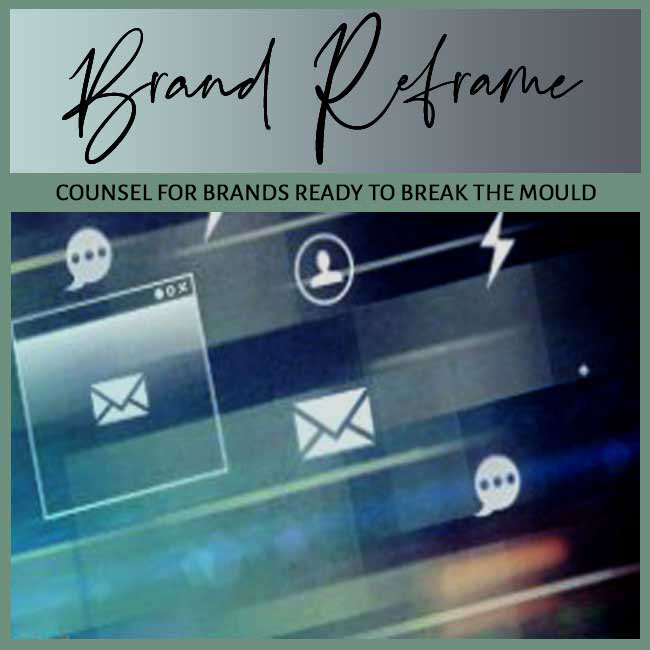
BY: SHOBHA PONNAPPA | BRAND BREAKTHROUGH STRATEGIST | 45 YEARS | 125+ CLIENTS
Brand timing is the art of launching, evolving, and promoting your brand at the right moments to maximise impact. It involves aligning your decisions with market readiness, cultural momentum, and your own organisational capacity. Poor timing can make strong ideas invisible, while good timing turns them into movements. Many leaders overlook timing, believing a good idea alone will succeed. This often leads to wasted investment and missed opportunities. Over time, mistimed moves weaken both credibility and market trust.
In my work with brands across industries, I’ve seen that timing often makes the difference between breakthrough and struggle. A brand that moves too early can confuse audiences and exhaust resources. One that moves too late risks irrelevance or missed opportunity. Mastering timing turns insight into real market traction. Brands that plan for timing build staying power. They learn to anticipate rather than react.
Today’s markets shift at unprecedented speed. Cultural trends rise and fall in months, technologies disrupt overnight, and buyer sentiment evolves rapidly. A brand’s ability to act at the right moment is now a critical advantage. Previously, long cycles gave businesses time to adapt; now delay equals risk. Fast competitors can overtake even well-funded players. Timing agility has become a survival skill.
Investors and customers expect brands to sense and respond to opportunity windows. Moving too slowly makes competitors seem smarter and more relevant. Moving too fast without preparation creates burnout and broken promises. Precision in timing builds credibility and momentum. The right pace shows confidence and foresight. Without it, brands appear reactive and unstable.
Great ideas fail if the market isn’t ready. Leaders must track cultural, technological, and economic signals to know when demand is forming. Launching before readiness wastes resources and confuses buyers. Patience often pays when paired with insight. Reading early indicators separates pioneers from reckless first movers. Smart timing reduces risk.
Readiness analysis includes customer behaviour, competitor moves, and regulatory landscapes. It requires studying trends beyond your category to anticipate shifts early. Brands that monitor these signals consistently launch into ripe conditions. Prepared observation leads to smarter moves. Teams must learn to synthesise signals across data, culture, and gut instinct. Continuous watchfulness creates advantage.
Timing is worthless if the brand cannot deliver on its promise. Leaders must evaluate internal readiness … skills, capital, supply, and culture … before acting. A premature push strains teams and damages credibility. Momentum requires aligned execution. Overpromising without delivery destroys trust fast. Resourced timing wins hearts and markets.
Strong brands invest in systems, partners, and talent early to support their planned timing. They ensure supply chains, service standards, and leadership can scale. Acting when capacity matches ambition creates reliable impact. Internal strength secures external success. Leaders must be brutally honest about bandwidth. Courage to pause avoids future crises.
Understanding rivals’ rhythms helps brands act strategically. Timing can mean entering before incumbents, or smartly following once they educate the market. Ignoring competitor moves risks being drowned out or arriving too late. Strategic sequencing creates advantage. Study not just launches but also fatigue moments when competitors are stretched. Anticipating reactions beats reacting later.
Brands that map competitors’ launch patterns and positioning can spot gaps or anticipate responses. They act when rivals are distracted or misaligned. This foresight converts timing into clear market share wins. Observation turns into competitive leverage. Winning timing often comes from counterintuitive patience. Knowing when not to act is as vital as acting fast.
Many categories have cultural or seasonal pulses that affect attention and adoption. Aligning with these rhythms makes campaigns and launches resonate deeply. Ignoring timing rituals makes brands feel tone-deaf or opportunistic. Respect for cultural flow earns trust. Brands that plan with these beats show empathy and intelligence. Ritual timing builds connection.
Smart brands build calendars around festivals, fiscal cycles, or cultural moments relevant to their audience. They adapt to when customers plan, spend, or celebrate. Matching these beats creates familiarity and relevance. Cultural sync multiplies marketing power. Timing campaigns to shared milestones makes messages more memorable. Consistency builds annual anticipation.
Founders should study market, culture, and internal readiness before defining milestones. Map when customers are most receptive and when resources will align. Design launch and growth stages with timing in mind, not just product readiness. Avoid rushing simply because the idea is exciting. Build contingency plans for sudden changes. Patience plus agility beats blind speed.
Testing small pilots can reveal real-world timing clues. Observe adoption speed, interest levels, and cost of attention. Adjust your larger launch plan based on these signals. Thoughtful sequencing reduces wasted effort. Feedback loops reveal whether to accelerate or hold. Early insight prevents costly missteps.
If your brand feels out of sync, start with diagnosis. Compare your past moves to market trends and competitor timelines. Spot where you were too early, too late, or misaligned with demand. Honest review reveals timing gaps. Understanding mistakes turns regret into learning. It also clarifies new opportunities.
Once identified, you can recalibrate. Delay further initiatives until readiness strengthens, or accelerate if the market is heating up. Reframe messaging to match current sentiment and regain momentum. Strategic pauses or pushes restore rhythm. Teams should communicate timing shifts clearly to stakeholders. Transparency keeps trust intact.
Rushing from excitement is a common trap. Leaders often launch when they are ready, not when the market is. Another mistake is waiting too long out of fear or perfectionism. Both extremes waste opportunity. Emotion-driven timing creates avoidable risk. Strategy-driven timing builds confidence.
Ignoring internal bandwidth also undermines timing. Announcing big moves without operational support backfires. Failing to respect cultural or seasonal context creates dissonance with audiences. Misreading timing erodes trust and traction. Brands must balance ambition with reality checks. Wise timing feels calm, not chaotic.
A wellness brand had strong demand but weak fulfilment systems. I advised delaying its national launch by a year to strengthen supply chains and hire critical talent. When they finally launched, they scaled smoothly and impressed investors. Patience converted risk into lasting growth. Early testing proved demand would hold. The delayed launch gained better reviews and margins.
A mid-size software company sensed AI adoption accelerating. I repositioned its analytics product as AI-powered just before the mainstream surge. This timely move won attention and new customers ahead of slower competitors. Trend alignment fuelled rapid traction. They attracted early press and investor excitement. Competitors struggled to catch up
A home décor retailer planned a big push mid-year. I suggested shifting to pre-festive months when spending peaks. Sales exceeded projections, and the brand became synonymous with celebration. Seasonal rhythm amplified impact. Marketing costs dropped because timing boosted natural demand. The strategy repeated annually with success.
The team planned a global rollout but lacked infrastructure. I recommended pausing and rebuilding operations before relaunching. The later launch met strong demand with reliability, avoiding earlier failure risks. Strategic delay protected reputation. Investors valued the maturity of the decision. Customers experienced a seamless new rollout.
A legacy appliance brand faced declining relevance as smart tech emerged. I timed a modern rebrand just before mainstream adoption of connected homes. The foresight won new younger customers without alienating loyal ones. Early but prepared action captured momentum. Sales growth returned and brand relevance improved. Media covered the timely reinvention.
A cause-driven NGO planned a quiet roll-out. I advanced timing to align with a global conversation on its issue. Donations and media coverage soared because it felt perfectly current. Cultural alignment turned small plans into a movement. Volunteers signed up rapidly thanks to visibility. Partnerships emerged with like-minded organisations.
If you launch products that confuse audiences or get ignored despite quality, timing is likely off. Stalled adoption and wasted campaigns are clues. Reviewing competitor and cultural trends helps reveal misalignment. Poor timing shows as effort with little return. Teams may feel demotivated when good ideas fail. Audits highlight where to adjust.
Yes. Brands can pause, reframe, and relaunch at a better moment. They can adjust narrative to fit current market sentiment and rebuild anticipation. Strategic recalibration restores momentum. Communicating the reason for timing change helps regain confidence. Many successful relaunches begin with honest reset.
Neither extreme works best. Enter too early and you educate competitors; wait too long and they win first-mover mindshare. Balance foresight with readiness. Smart early movers pair vision with delivery. Careful pilots reveal if readiness meets opportunity. Data-informed bravery beats guessing.
Audit systems, talent, and finances before big moves. Launch when capability matches ambition, even if market is tempting. Delay can be strategic if it protects credibility. Capacity-aligned timing builds trust. Honest self-assessment avoids embarrassing overreach. Wise leaders pace ambition with delivery.
Absolutely. Brands must monitor signals and adjust pace. Planned flexibility helps respond to sudden changes without panic. Adaptive timing sustains relevance. Building buffers into plans allows quicker pivots. Agile yet stable timing impresses stakeholders.
They study market maturity, competitor readiness, and operational strength. Perfectly timed brands de-risk investment by proving traction potential. Poorly timed brands raise concerns about execution risk. Timing confidence attracts capital. Evidence of readiness reassures investors. Success stories from pilots strengthen trust.
Explore Brand Relevance Mistakes … Real Cases & Fixes
Case Studies
FAQ Insights

"One BIG IDEA can turn brand stagnation into unstoppable movement. Spots are limited each week ... book your breakthrough session now."
Shobha Ponnappa
My Definitive Guides to Other Critical Branding Concepts
Smart insights, real-world frameworks, and idea-driven clarity – designed to help brands move.
Get my fortnightly Brand Reframe newsletter. Smart insights, distilled thinking, and focused momentum to help your brand lead.

Get my free AI strategy guide. Smart prompts, sharper briefs, and practical ways to make AI support your brand momentum.

Just fill in the form to join. Get my newsletter and the guide shown alongside, all with several game-changing tips.